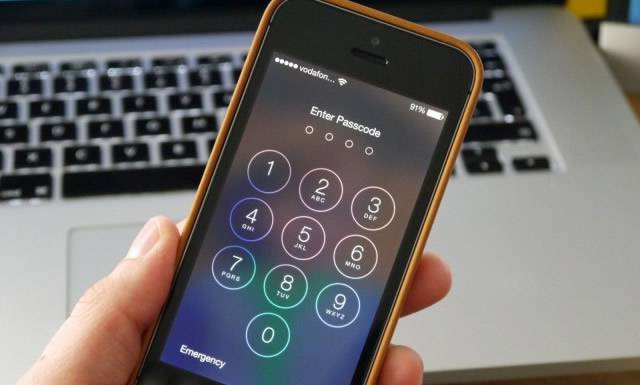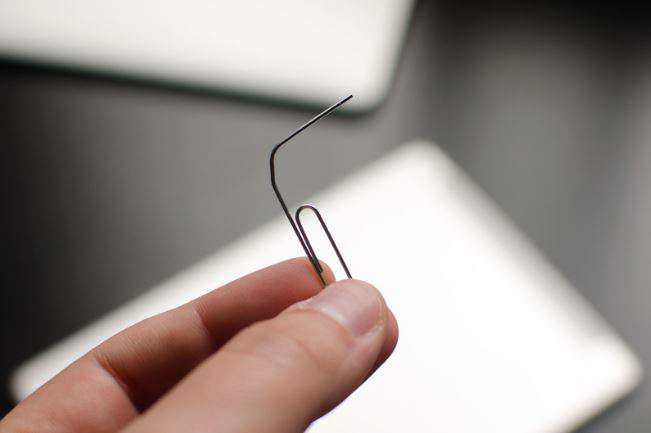Forgetting the password to your iPhone can be a frustrating experience. Whether it’s due to a new device, a change in your password, or simply forgetting the information, being locked out of your iPhone can feel like a major setback. However, there are several methods you can try to regain access to your device. In this blog post, we will explore four different methods you can use to open an iPhone when you forgot the password, as well as some alternative solutions and bonus tips to help you in this situation.
Why You Need to Open Your iPhone When You Forgot The Password
When you forget the password to your iPhone, it can prevent you from accessing important information, making phone calls, sending messages, using apps, and more. Here are a few reasons why opening your iPhone when you forgot the password is crucial:
- You need to retrieve important data: If you have valuable photos, messages, or other data stored on your iPhone, you’ll want to regain access to it as soon as possible.
- You want to avoid data loss: If your iPhone is disabled after entering the wrong password multiple times, you might risk losing all the data on your device.
- You want to continue using your iPhone: Without the password, you won’t be able to use your iPhone for everyday tasks and communication.
- You want to avoid the hassle of a factory reset: If none of the methods to open your iPhone work, you may need to resort to a factory reset, which erases all data on your device.
Now that we understand why opening your iPhone when you forgot the password is important, let’s explore four methods you can try.
Video Tutorial:
Part 1. Using iTunes
Using iTunes is one of the most common methods to open an iPhone when you forgot the password. Here are the steps you can follow:
1. Connect your iPhone to a computer with iTunes installed using a USB cable.
2. Launch iTunes and wait for it to detect your device.
3. When prompted for your device passcode or to “Trust This Computer,” try entering a random passcode several times until you see a message saying “iPhone is disabled, connect to iTunes.”
4. On iTunes, you will see a notification stating that your iPhone is in recovery mode. Click on the “Restore” button to proceed.
5. Follow the on-screen instructions to restore your iPhone to its factory settings.
6. Once the restore process is complete, you can set up your iPhone as a new device and create a new passcode.
Pros:
1. Restoring your iPhone with iTunes is a straightforward process.
2. It allows you to regain access to your iPhone without the need for additional tools.
3. It erases the existing passcode, allowing you to set up a new one.
Cons:
1. Restoring your iPhone with iTunes will erase all data on your device.
2. It requires you to have a computer with iTunes installed.
3. If you haven’t backed up your iPhone before, you may lose important data.
Part 2. Using iCloud
If you have enabled Find My iPhone and associated your iPhone with your iCloud account, you can use the “Erase iPhone” feature to open your device. Follow these steps:
1. Visit the iCloud website (www.icloud.com) on a computer or another device.
2. Sign in to your iCloud account using the same Apple ID and password associated with your locked iPhone.
3. In the iCloud dashboard, click on “Find iPhone.”
4. Select your iPhone from the list of devices.
5. Click on “Erase iPhone” to remotely wipe all data on your device, including the passcode.
6. Once the erase process is complete, you can set up your iPhone as a new device and create a new passcode.
Pros:
1. You can remotely erase your iPhone without needing physical access to the device.
2. It allows you to regain access to your iPhone without the need for a computer.
3. It erases the existing passcode, allowing you to set up a new one.
Cons:
1. Erasing your iPhone using iCloud will erase all data on your device.
2. Your iPhone must have an active internet connection for the erase command to work.
3. If you haven’t backed up your iPhone before, you may lose important data.
Part 3. Using Siri and Voice Control
This method is applicable to older iPhone models running an iOS version prior to iOS 11. Here are the steps you can follow:
1. Press and hold the Home button (or the Side button on newer iPhone models with Face ID) to activate Siri.
2. Ask Siri to “Turn on VoiceOver.”
3. Once VoiceOver is enabled, use Siri again to access the clock or any other app with a password entry option.
4. When the password entry screen appears, triple-press the Home button (or the Side button on newer iPhone models with Face ID) to bring up the Voice Control feature.
5. Use Voice Control to tap on the password field and enter any random combination of numbers or characters.
6. Keep trying different combinations until the device unlocks.
Pros:
1. This method can be used on older iPhone models running an iOS version prior to iOS 11.
2. It doesn’t require a computer or additional tools.
3. It can bypass the passcode to unlock the device.
Cons:
1. This method is not guaranteed to work on newer iPhone models with the latest iOS versions.
2. It may take several attempts before successfully unlocking the iPhone.
3. It can be time-consuming and requires familiarity with Voice Control commands.
Part 4. Contacting Apple Support
If you’re unable to open your iPhone using the methods mentioned above, your best option is to contact Apple Support for assistance. They can guide you through the necessary steps or provide further solutions to help regain access to your device.
Pros:
1. Apple Support has expertise in dealing with iPhone lockouts and can provide personalized assistance.
2. They have access to additional tools and techniques that can help in unlocking your iPhone.
3. They can assist you in recovering your data if you haven’t backed up your iPhone.
Cons:
1. Depending on the situation, contacting Apple Support may involve waiting times or scheduling an appointment.
2. If the issue is not resolvable, they may recommend a factory reset, which erases all data on your device.
What to Do If You Can’t Open Your iPhone When You Forgot The Password
If you’ve tried all the methods mentioned above and still can’t open your iPhone when you forgot the password, here are a few alternative solutions you can consider:
1. Use third-party tools: There are various third-party tools available that claim to unlock iPhones. However, exercise caution when using such tools, as they may not always be reliable or secure.
2. Take it to an authorized service center: Authorized service centers have the expertise to handle locked iPhones and can provide professional assistance.
3. Perform a factory reset: As a last resort, you can perform a factory reset on your iPhone. Keep in mind that this will erase all data on your device, so make sure to back up any important information before proceeding.
Bonus Tips
Here are a few bonus tips to help you in case you forget your iPhone password:
1. Set up Touch ID or Face ID: Enabling biometric authentication can provide an additional layer of security and make it easier to unlock your iPhone.
2. Use a strong alphanumeric password: Instead of relying on simple patterns or PINs, consider using a strong alphanumeric password that is harder to guess.
3. Regularly back up your iPhone: By regularly backing up your iPhone using iTunes or iCloud, you can ensure that your data is safe even if you’re locked out of your device.
The Bottom Line
Forgetting the password to your iPhone can be a stressful experience, but there are several methods you can try to regain access. From using iTunes and iCloud to accessing your device through Siri and Voice Control, each method has its pros and cons. If all else fails, don’t hesitate to contact Apple Support for personalized assistance. Remember to use caution when considering alternative solutions and always prioritize the safety of your data.
5 FAQs about Opening an iPhone When You Forgot The Password
Q1: Is there a way to open an iPhone without losing data?
A: If you have a recent backup of your iPhone, you can restore that backup after unlocking your device using methods like iTunes. However, if you don’t have a backup, opening your iPhone may involve erasing all data on the device.
Q2: Can I use Siri to bypass the passcode on any iPhone?
A: No, the Siri method mentioned in this blog post is applicable to older iPhone models running an iOS version prior to iOS 11. Newer iPhone models and iOS versions have stricter security measures in place.
Q3: Are third-party tools reliable for unlocking iPhones?
A: The reliability of third-party tools for unlocking iPhones can vary. It’s important to research and choose a reputable tool if you decide to use one. However, it’s always recommended to rely on official methods or seek assistance from Apple Support.
Q4: What should I do if I can’t contact Apple Support immediately?
A: If you’re unable to contact Apple Support immediately, you can try the methods mentioned in this blog post or consider alternative solutions mentioned earlier. However, contacting Apple Support should be your priority for personalized assistance.
Q5: How can I prevent forgetting my iPhone password in the future?
A: Setting up biometric authentication using Touch ID or Face ID, using a strong alphanumeric password, and regularly backing up your iPhone are some of the ways to prevent forgetting your iPhone password. Additionally, creating a secure and memorable password or using a password manager can also help.




